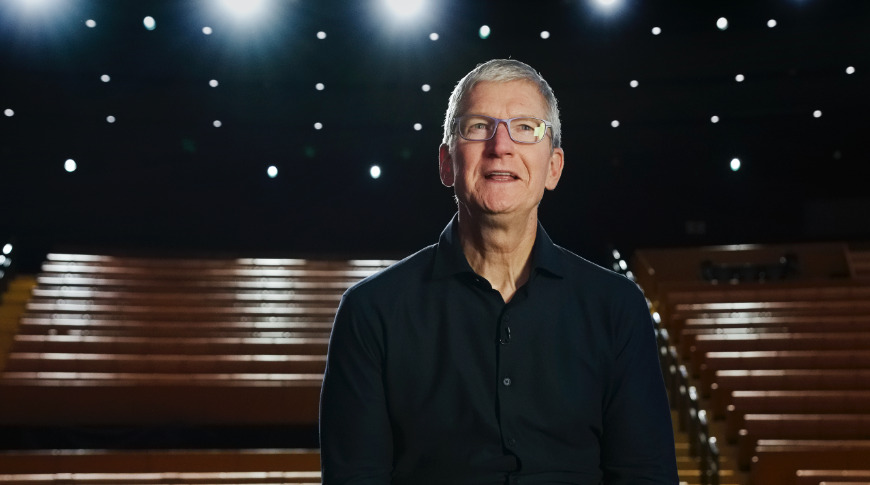Apple's fast-paced keynote raced through the features coming to macOS, iOS, and more, but it wasn't even close to being complete. Here are highlights from the start to the finish of WWDC 2020.
Apple's WWDC 2020 keynote video was an especially well-made production that roared through myriad software updates, as well launching the entire move to Apple Silicon. If you want to know what Apple is bringing to us, you would do well to start with that video — but it was far from complete.
Even if only because of time constraints, it couldn't be. But there was also the issue that the moment news broke of software and the new Apple Silicon, there were questions Apple hadn't answered.
As soon as those software updates were available for developers to try, there were issues that Apple may not even have thought of. Plus we already know of bugs and feature change requests that developers are filing, which Apple has subsequently spoken about.
So here is a single place that you — and we — can have to find out about the latest on every single thing that Apple is releasing after WWDC. It will be continually updated, and it already links to the in-depth AppleInsider tips, editorials, hands-on reviews, and videos.
Apple Silicon
Twenty presenters, more than a dozen locations around Apple Park, countless updates, and a couple of jokes. It was a memorable WWDC and all 108 minutes of it are available to watch on YouTube.
However, it's going to be the last half hour or so that gets studied the most. That's where Tim Cook introduced the transition to Apple Silicon.
We learned about the reasons for the move, we learned about the timescale, and we got news of when we can expect to see the first Apple Silicon Macs.
What we didn't get then was a claim that it was Intel's botched Skylake processor that finally prompted Apple to move to its own processors. And it's also only since the keynote that we've learned facts such as how the familiar startup key combinations won't make the transition.
Nor was there much about the Developer Transition Kit at first. After the keynote, Federighi cautioned that people shouldn't read too much into that DTK, that it wasn't anything like what a future consumer product would be.
"It's not a basis on which to judge future Macs, of course, but it gives you a sense of what our silicon team can do when they're not even trying," he said. "And they're going to be trying."
Software updates
If it's this transition that made the loudest news, in another sense there was a far greater volume of information. There can't be a single element of Apple software that wasn't touched upon in the keynote, or the subsequent developer sessions.
macOS Big Sur
Watching the keynote when it was first streamed, you could be forgiven for noticing how much time was being spent on iOS, iPadOS, and watchOS. It seemed as if the Mac couldn't have got a lot of attention, especially not as we were all so sure that there would be an ARM Mac announcement.
Yet if got a shorter slot in the show, that was more because so much of it was about making macOS Big Sur match up with the new iOS 14 features such as updates to Messages and Apple Maps. In terms of a change from previous versions of macOS, it was huge.
Sometimes when you go from one macOS to the next, you initially see very little. It's over time that you come to appreciate the new features, and it's when you have to go back to the previous one that you really get how significant they are. Not this time.
This time, the moment macOS Big Sur has been installed, you're going to know it. The look of everything from the Dock to the menubar to the Finder windows, it's all be subtly — and sometimes not so subtly — redesigned.
It's reminiscent of how iOS 7 was a sea change in how the iPhone looked. Then as now, some people love the new look, and others do not.
Some people who dislike it are simply not keen on specific design elements, but others are concerned that this is Apple attempting to make the Mac look more like iOS — and thereby abandon its roots. This is indeed the end of OS X, but it's far from the end of the Mac.
iOS 14 and iPadOS 14
Despite all of the attention that iOS 14 and iPadOS 14 got in the WWDC keynote, they are both examples of this not-immediate-obvious difference. Except for this time, it's only your first glance when you won't pick out the changes.
When you start going into Messages, that's when you'll see just how different — and improved — the experience is.
Then if you've never swiped to the right to bring up Apple's small widgets, you might now do it. Once. Swipe into that section, and you can drag widgets out into the home screen or any other page. There are limitations, but once you've tried it, this is going to be the distinguishing feature of iOS 14 for you.
That's not to say that the improvements to Apple Maps aren't excellent, but you'll find them when you go to plan a journey, or avoid traffic issues, not every time you pick up the phone.
It's also not to say that Apple's annual update to Memoji wasn't very much welcomed, by whoever uses that stuff.
Right now Apple has to guess what we will all use, and specifically whether Augmented Reality will ever catch on. It's not as if the rumored "Apple Glass" are the first AR spectacles by a technology company.
However, Apple's WWDC 2020 developer sessions do continue to make it sound as if we'll all want to buy "Apple Glass" when it comes out. The latest from this week's announcements was that ARKit 4 will let software paint virtual artwork mapped onto real-world objects.
watchOS
Admit it, there may have been more exciting features announced at WWDC, and there were certainly more involved ones, but only one was actually adorable. The forthcoming watchOS 7 will know when you're washing your hands, and it will prompt you to keep going.
Of course, that's borne of the coronavirus pandemic, so perhaps adorable isn't an appropriate word. But it's the right one. You saw this and you wanted it, and you also thought that only Apple would do it — and do it in quite this way.
More prosaic, but still welcome watchOS features include new fitness ones such as an ability to detect dancing. It can even distinguish between, say, Irish dancing where the upper body is held rigidly still, Argentine tango which is slower, and possibly Dad dancing, which Kevin Lynch gamely demonstrated.
There's also the long-awaited sleep tracking, although Apple deftly phrased its descriptions to make a virtue of how you'll need to remember to charge your Apple Watch in the morning. And there is now an easier way to set up complications, or choose Faces, or share them.
tvOS
Steve Jobs used to refer to Apple TV, the hardware box, as a kind of hobby, and while the company no longer does that, there has to be a limit on what Apple can do with it. Apple TV plays TV.
The company has added Apple Arcade to it, it's added apps, it's added Apple TV+, but fundamentally it's still the same box it's been for a long time. So of all the predictions about what Apple would unveil, an updated tvOS was an afterthought.
Until Apple unveiled how tvOS was gaining features that make it more useful alongside that other house-bound Apple technology, HomeKit. Now you'll be able to check out your HomeKit cameras from Apple TV.
What's more, if someone comes to your door during "Star Trek: Picard," then the good captain's face may be interrupted by a less dramatic person, perhaps in a parcel delivery uniform. You can switch a lot of new features off, incidentally.
CarPlay
That delivery person you've just chased from your front door until they jumped into their truck and drove off, has hopefully got CarPlay. They work hard, they deserve some new features to get them through their day.
Cross-platform
CarPlay is part of iOS 14, and so many of the features in Apple's new releases are shared across the different platforms. As well as the major ones mentioned, though, there are other niceties such as how Game Center has been updated.
If they were ever seen as just iPhone accessories, AirPods Pro are getting the cross-platform treatment now. As well as the new spacial audio that will improve the sound you hear on the AirPods Pro, you're now going to more easily hear music on all your devices.
AirPods are already paired to, say, your iPad, if it's on the same Apple ID as your iPhone. And you can pair them to just about anything, but it does get fiddly — even when it works first time.
Now Apple is saying that as you're listening to your iPhone, but you then put it down and pick up your iPad, the AirPods Pro will automatically switch to that device. Or back again.
We'll have to see how well — and how quickly — the feature works. But it is in keeping with how AirPods Pro are so small that you forget you're wearing them. You. just feel the world is surrounded with music, which is far from a bad thing.
Don't rush into this
If you're a developer, or just willing to pay the annual $100 fee to register as one, you could have early, beta versions of macOS Big Sur, iOS 14, iPadOS 14 and more right now. These are all significant enough updates that you want them, too.
But if AppleInsider has installed every beta and is examining them all, there isn't a single person on staff who has never had problems with beta software. The person next to you can have installed macOS Big Sur without a problem, and something in your MacBook Pro means that it totally fails.
It simply isn't worth the risk, and most definitely, certainly, positively, it is not worth taking a chance with your main Mac or iOS device.
More than perhaps any other year, this WWDC was like getting a sneak peek of the Christmas and birthday presents you're going to get later in the year. Enjoy the peek and go back to your current devices — even though iOS 13 and macOS Catalina do suddenly seem very old-fashioned.
Keep up with AppleInsider by downloading the AppleInsider app for iOS, and follow us on YouTube, Twitter @appleinsider and Facebook for live, late-breaking coverage. You can also check out our official Instagram account for exclusive photos.
 William Gallagher
William Gallagher








 Christine McKee
Christine McKee
 Marko Zivkovic
Marko Zivkovic
 Mike Wuerthele
Mike Wuerthele

 Amber Neely
Amber Neely
 Sponsored Content
Sponsored Content
 Wesley Hilliard
Wesley Hilliard








There are no Comments Here, Yet
Be "First!" to Reply on Our Forums ->